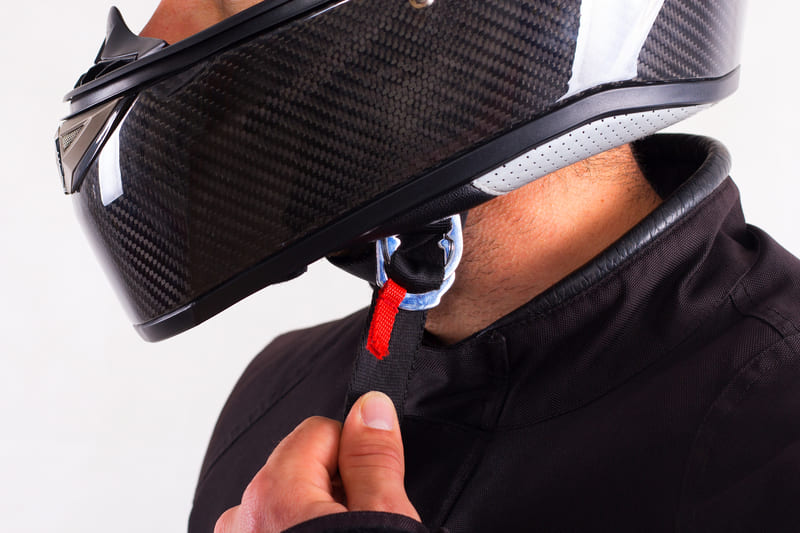Table of Contents
How to measure helmet size: guide, chart, and measurements
Selecting the correct motorbike helmet size is an essential step for every motorcyclist. It not only ensures a safer riding experience but also enhances comfort and stability. Understanding how to measure your head and interpret sizing charts can make the difference between a protective fit and an ill-fitting helmet. This guide will walk you through the process of measuring your head, using helmet size charts, and finding a perfect fit for your needs.
How to measure your head for a helmet
Measuring your head for a helmet is the first step to ensuring a proper fit. Start by using a flexible measuring tape. Wrap it around the widest part of your head, just above your eyebrows and ears, ensuring it sits level all the way around. Note the circumference in both centimetres and inches as different size charts will use different measurements.
Once you have your measurement, compare it to the sizing chart provided by the helmet manufacturer, as sizes can vary between brands. If your head measurement falls between two sizes, opt for the smaller size for a snug but comfortable fit. Remember, a helmet should feel secure without causing pressure points or discomfort. Checking the fit before purchasing is essential, as an accurate measurement ensures both safety and comfort while riding.
Motorcycle helmet shapes
Motorcycle helmets come in three main shapes: round oval, intermediate oval, and long oval. These shapes refer to the contours of the inside of the helmet and how they match the shape of your head.
A round oval helmet is designed for heads that are nearly equal in width and length, while an intermediate oval suits slightly longer head shapes, which are the most common. Long oval helmets cater to riders with heads that are significantly longer than they are wide.
Choosing the correct helmet shape is as important as selecting the right size. A mismatch can lead to discomfort, pressure points, or a loose fit, reducing safety. Always try on helmets to ensure the shape aligns with your head for a secure and comfortable ride.





Motorcycle helmet sizes
Motorcycle helmet sizes vary across brands, but most follow standard size measurements based on head circumference. The sizing guide typically ranges from extra small (XS) to extra-extra-large (XXL). Properly measuring your head and consulting the manufacturer’s size chart ensures a snug and secure fit. Below is a general sizing guide to help you select the correct helmet size:
| Size | Head circumference (cm) |
| X | 53-54 |
| S | 55-56 |
| M | 57-58 |
| L | 59-60 |
| XL | 61-62 |
| XXL | 63-64 |
Keep in mind that sizes can vary between brands, so always check specific charts before purchasing. A helmet should fit snugly without causing discomfort or pressure points. If possible, try on helmets before buying to ensure the right fit. A proper size guarantees maximum protection and comfort while riding.
What helmet size do I need?
To determine what helmet size you need, measure the circumference of your head using a flexible tape measure. Wrap it around the widest part of your head, just above your eyebrows and ears. Once you have the measurement, compare it with the size chart provided by the helmet manufacturer, as sizes can vary between brands.
A properly sized helmet should feel snug without being overly tight or uncomfortable. If your measurement falls between two sizes, choose the smaller one, as helmets tend to loosen slightly over time. Always try the helmet on to ensure it fits securely and doesn’t shift when you move your head. A well-fitted helmet enhances both safety and riding comfort.
Trying a helmet on
When trying on a helmet, check how it fits around your cheeks. Stand in front of a mirror and assess the fit. If you can fit more than one or two fingers between your cheek and the helmet’s cheek pads, the helmet may be too large. On the other hand, if the helmet is pressing so tightly against your cheeks that it makes it difficult to talk or causes discomfort, it’s likely too small. A well-fitted helmet should make firm contact with your cheeks without causing pain or restricting movement. Ensure the fit is balanced and comfortable all around for optimal protection and comfort.

Different types of motorcycle helmets
Motorcycle helmets come in several types, each designed to offer different levels of protection and comfort depending on your riding style. The most common types include:
- Full-Face Helmets – These provide the highest level of protection as they cover the entire head, including the face, and have a solid chin guard. They are ideal for high-speed riding and long-distance journeys.
- Open-Face Helmets – These helmets cover the top, back, and sides of your head but leave the face exposed. They offer less protection than full-face helmets but are lighter and provide better visibility and ventilation, making them suitable for casual riders.
- Modular Helmets – A hybrid of full-face and open-face helmets, modular helmets have a flip-up chin guard that can be raised for convenience when not riding at high speeds.
- Half Helmets – Offering the least coverage, half helmets cover only the top of the head, leaving the face and neck exposed. They are lightweight and provide a more open riding experience, though they offer limited protection.
Choosing the right helmet depends on your riding preferences, comfort, and the level of protection you need.
Top products related to this topic:












